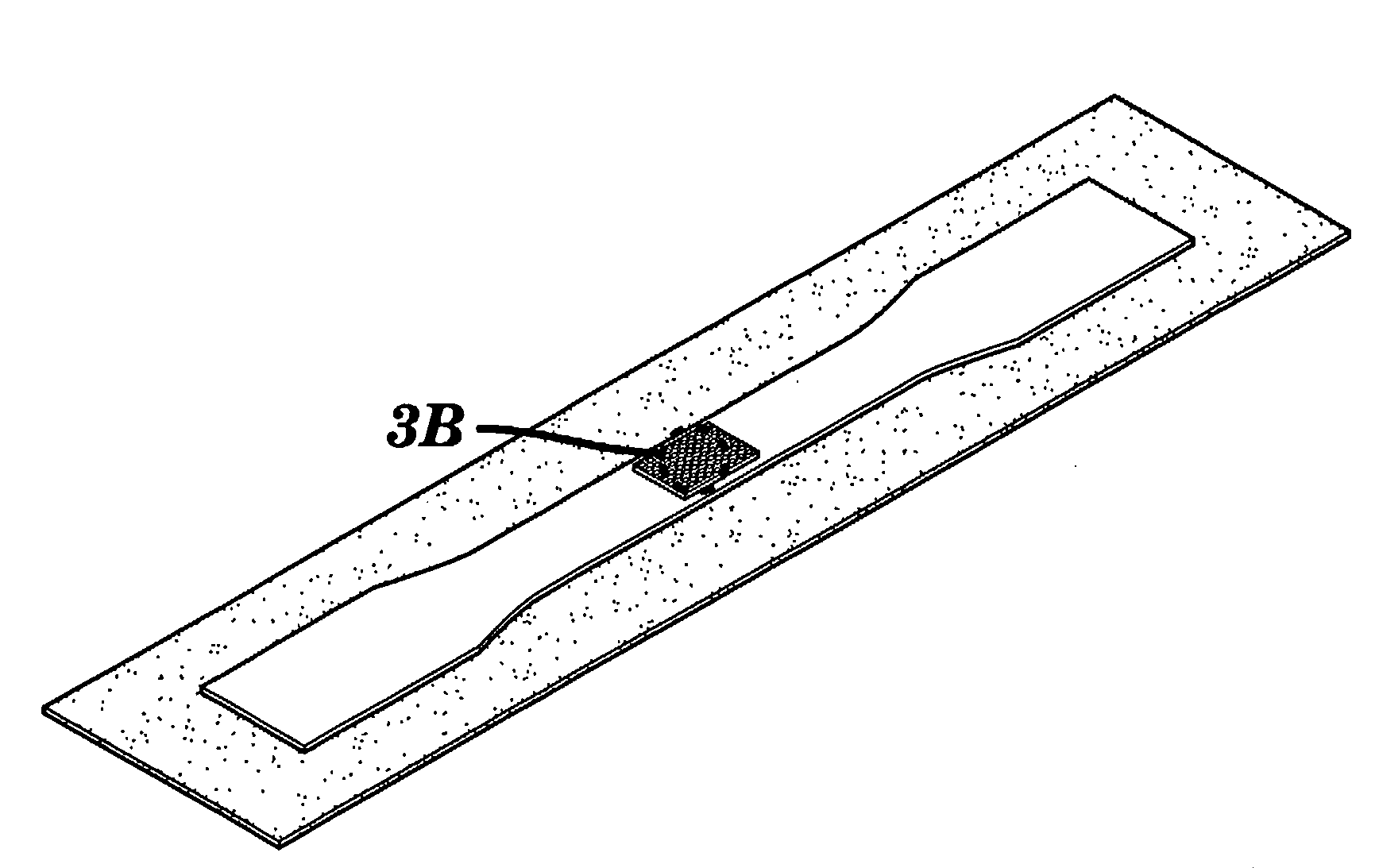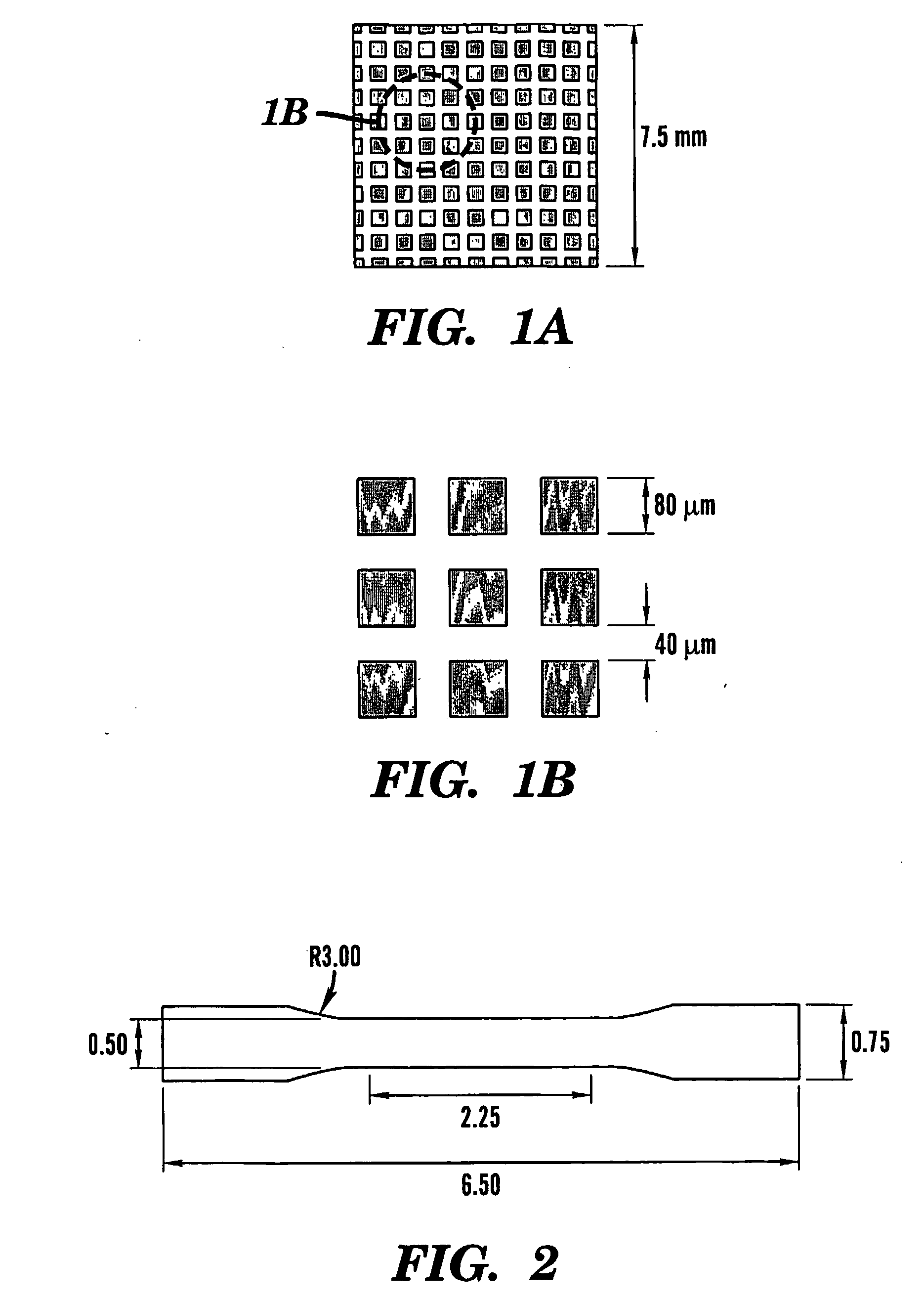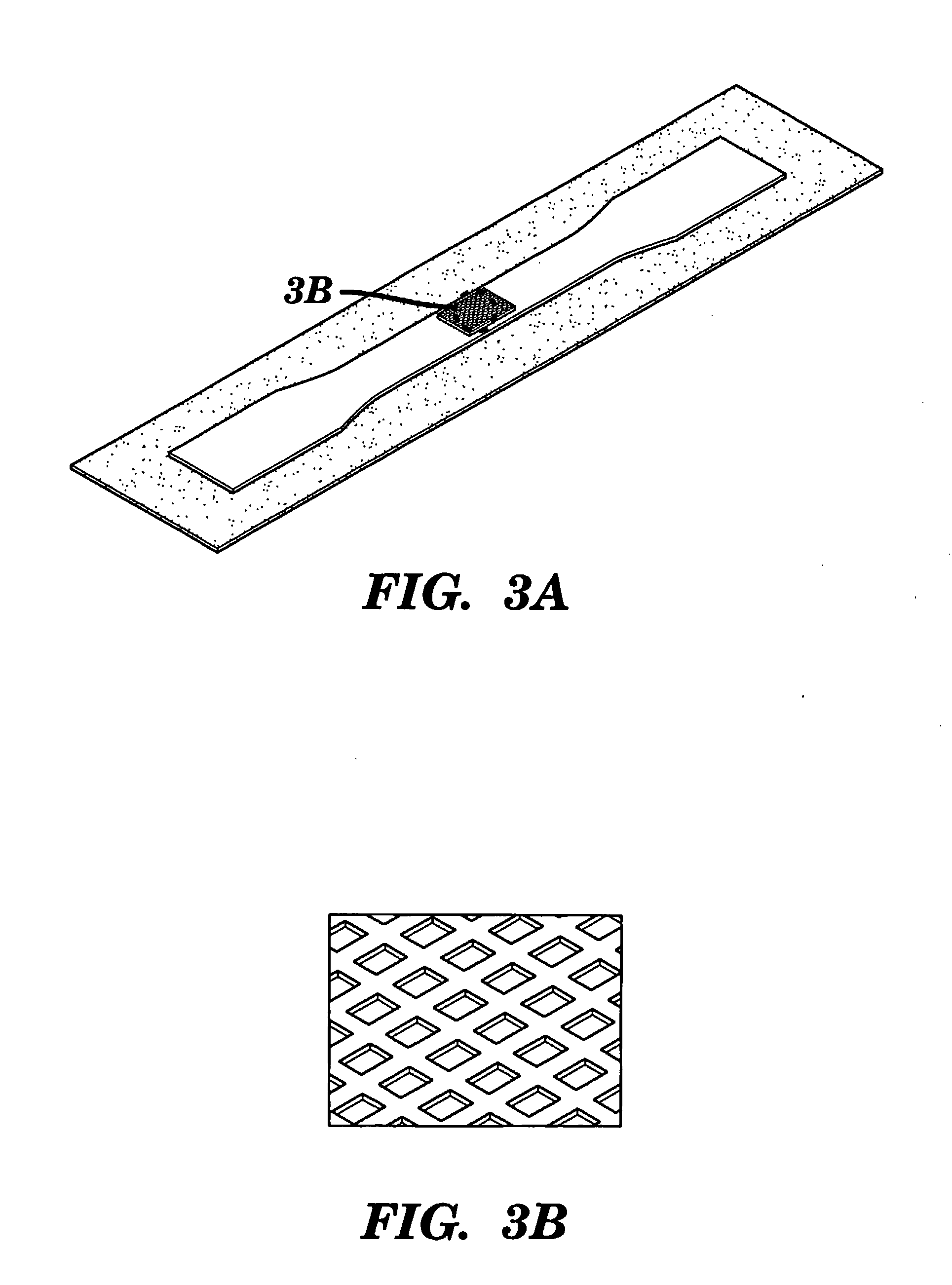Method for Producing Biomaterial Scaffolds
a biomaterial and scaffold technology, applied in the field of multi-layered scaffolds, can solve the problems of limited regenerative capacity of damaged cartilage, non-biological relevance of 2d systems, and a typical ill-defined porous structure of 3d scaffolds
- Summary
- Abstract
- Description
- Claims
- Application Information
AI Technical Summary
Problems solved by technology
Method used
Image
Examples
example 1
Layered Scaffolds
[0072]1.3.1. Bio-LOM Process (LOM stands for laminated object manufacturing; Bio-LOM refers to the technique which includes lining the scaffold with organic materials, such as bacterial cellulose)
[0073]The techniques for soft lithography [37] are applied to thermal lamination.
[0074]1.3.1.1. Advanced etching was used to make a silicon master of a die with user-defined pattern. As seen in FIG. 1, a grid pattern (80 μm square sections with spacing of 40 μm) was designed using Intellisuite 0 software (Intellisuite Software, Woburn, Mass.). A photolithographic mask of the desired pattern was made by depositing a thin film of chromium onto a flat glass panel (Benchmark Technologies, Lynnfield, Mass.) The mask was sent to a silicon foundry service (MEMS Exchange, Reston, Va.) for Deep Reactive Ion Etching (DRIE) onto a silicon wafer to a vertical depth of 90 μm. Prior to etching, the mask was used to photochemically cure a thin layer of photoresist on the areas of the wafe...
example 2
Simplified Method for Scaffold Fabrication
[0085]2.1.1. Improved Bio-LOM process
[0086]A simpler process in developing a silicon master dog-bone with embedded, grid pattern is described that can be used material such as PLGA. The Bio-LOM processing steps after section 1.3.1.2 are to remain the same. In the new process, a single photolithographic mask of the desired complete pattern for each layer is made with the dog-bone shape instead of embedding the smaller square sections. This allows for less user-error in the process. A number of dog-bones with etched pattern can be fabricated on a wafer (see FIG. 13).
2.2 Experimental Method for Growth and Testing
[0087]The well-defined scaffolds are characterized, introduced to chondrocytes and appropriate media, and then analyzed chemically and mechanically.
2.2.1. Characterization
[0088]Scanning Electron Microscopy (SEM). Zeiss DSM 940A is used to study the surface morphology of the materials before and after chondrocyte growth. Phase-contrast m...
PUM
| Property | Measurement | Unit |
|---|---|---|
| temperature | aaaaa | aaaaa |
| vertical depth | aaaaa | aaaaa |
| temperature | aaaaa | aaaaa |
Abstract
Description
Claims
Application Information
 Login to View More
Login to View More - R&D
- Intellectual Property
- Life Sciences
- Materials
- Tech Scout
- Unparalleled Data Quality
- Higher Quality Content
- 60% Fewer Hallucinations
Browse by: Latest US Patents, China's latest patents, Technical Efficacy Thesaurus, Application Domain, Technology Topic, Popular Technical Reports.
© 2025 PatSnap. All rights reserved.Legal|Privacy policy|Modern Slavery Act Transparency Statement|Sitemap|About US| Contact US: help@patsnap.com



